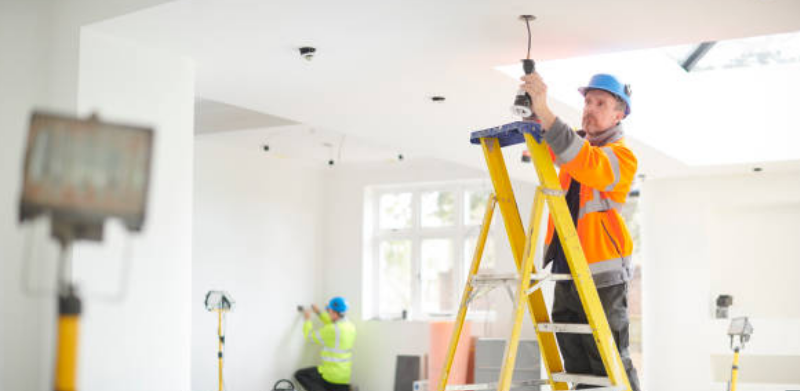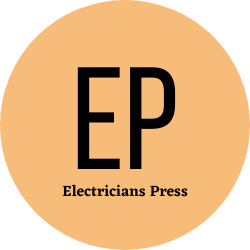Electrical Whole House Inspection
by siteadmin

Electrical whole house inspections confirm that wiring and outlets are up to code. They look at all outlets and receptacles, including the meter and service panel. Inspectors will check for GFCI protection in kitchen and bath outlets. They will also confirm that circuits include grounding, which helps prevent shocks when outlets get wet. Here at Ampi Electric, we pride ourselves on providing top-notch service backed by years of real-world experience. Whether you are in need of residential electrical repairs or commercial installations, Ampi Electric has you covered.
Ampi Electric, Inc. has been providing residential and commercial electrical services to the South Florida market for over 20 years. We are a full service electrical contractor and offer a complete range of residential and commercial electrical services including installations, repairs and upgrades. You name it, we can do it! From new construction to complete renovation work to residential electrical updates, Ampi Electric is the company to call to meet your most demanding electrical requirements. We are able to provide an electrician west palm beach residents can trust, along with the best possible electrical services. We are dedicated to providing our customers with high-quality service, and we’re always available to answer any questions. We are available 24 hours a day, 7 days a week, so you can call us at any given time.
Most of your electrical wiring is hidden inside walls and ceilings. Home inspectors can only do a limited amount of visual inspection, especially since they are prohibited from opening up walls and damaging homes. If they spot something amiss, they will make a note of it and refer you to an electrician to get the problem checked out.
Home inspectors check the wiring in homes to make sure it meets codes, particularly local codes and the National Electrical Code. These codes dictate how wires should be connected and what type of wire they should be.
For example, copper wires should be used, not aluminum. Aluminum wiring is more likely to overheat and cause a fire. Home insurance companies may not insure a home with aluminum wiring. Inspectors also look at the wiring in a house to see if it uses NM-cable (nonmetallic sheathed cable). This type of wire is more durable than other types of wire and doesn’t have as many problems.
They will also note the location, condition and size of the electrical box. This is to ensure it is large enough for the number of wire conductors that will be in it. They will also verify that there is an adequate number of circuits for the electrical demand in each room, particularly in kitchens where appliances require dedicated circuits.
In addition, they will also look at the switches and outlets to verify they are up to code. This includes looking at the receptacles to see whether they are occupied or have a loose plug, and checking that the outlet cover has not been damaged or opened up. They will also check for “push-in connections” at outlets, which make less contact with the wires and can be a fire hazard in the event of an overload.
Flipping a switch, plugging in a device and turning on the TV are such common, everyday tasks that we often take for granted what happens behind the walls to make those things possible. But there’s much more that goes into keeping the lights on than we realize, and knowing a little about the different types of outlets and how they work can help you understand what your home inspector is looking for when inspecting them.
For starters, your home inspector will test every outlet to confirm they’re functioning properly. Outlets that are discolored, damaged or smell like burning could indicate a wiring problem and pose a fire hazard.
They’ll also look to see if the outlet receptacle ratings match the amperage of the circuit they’re serving. Ideally, household circuits should provide 15 or 20 amp service and use outlet receptacles that are appropriately rated. Your inspector will also note if outlets are occupied by too many appliances or if extension cords are used frequently. These are both signs that your electrical system may not be able to handle the load you’re using it for and can create a fire hazard if left unattended.
Your inspector will also check to see if any of your outlets are GFCI-protected. These outlets, which are commonly found in places where there’s a risk of water contact (like bathrooms and kitchens) can prevent electrocutions by quickly shutting off the flow of electricity if they detect a shock or imbalanced current.
Your inspector will also look for outlets with recessed connection points, which allow wires to connect to them without protruding out of the outlet and creating a fire hazard. They’ll also examine outlets for the correct type and number of prongs and whether the outlet has a grounding-type connector (which helps reduce the risk of electrical shock).
The inspector will look at each interior light switch and fixture to ensure they turn on. If they don’t, he will note that in his report. He will also look for missing bulbs and damaged fixtures. He will also check to see that there are light switches near doorways and at both ends of hallways. He will also check to make sure that there are enough light fixtures for the house, that the lights are of the correct wattage and that each fixture is in working condition.
Outside lighting will be inspected too, and this includes security lights, flood lights, porch lights and the like. The inspector will look at these for any evidence of rust or corrosion; proper mounting; the ability to change out bulbs; any indication that the fixture has been altered (for example, if it’s been converted to LED); and any other issues.
He will also look at any recessed lighting that may have been retrofitted with a non-UL listed fixture. These are a potential fire hazard because they don’t have the double-can design that prevents them from coming into direct contact with insulation, and they generally run much hotter than the original fixtures did.
The inspector will also note if any recessed lighting has been improperly installed in the ceiling or attic. This can include a joist that has been cut to fit the fixture; improper drywall and caulking around the fixture; or improper insulation in the attic.
A circuit breaker is the safety mechanism that ensures that excess current doesn’t enter a circuit, and this is something your home inspector will look at during his inspection. When a breaker trips, it’s doing its job by shutting down the electrical system to prevent a fire or other damage.
The inspector will check whether the breaker panel is properly labeled, and that the breakers are sized correctly. For example, if a 15 amp breaker is connected to 20 amp loads, this can cause overloading and lead to a fire. He will also look at the wires and assess their condition. Loose wires may generate heat and create unsafe conditions, and he will note whether the wires have curves on them or are straight (straight wires indicate they are too tight and might pop off in the future).
He will check that there are ground-fault circuit interrupters (GFCIs) in kitchens, bathrooms, garages, outdoors, and within six feet of sinks. These are required by code to minimize electrocution risks and reduce fire hazards.
If there aren’t GFCIs, your inspector will recommend that you have them installed to minimize the risk of shocks and fires. In addition, he will check that the outlets in these areas are properly protected with AFCIs.
The inspector will also evaluate the location of the breaker box in your house. It should be easily accessible and located in a safe place, such as a garage or utility closet. The inspector will also check that the breaker box is rated for your household’s electrical needs, and that there are enough breakers to handle the current load of all appliances. If the breaker box is too small, your inspector will recommend installing a new one.
The service panel is the main distribution point for electricity in your house. It contains either circuit breakers or fuses and provides power to outlets, lights and other electrical fixtures throughout the property. A professional home inspector will closely examine this electrical system during the inspection. This is done to ensure that the electrical panel follows code requirements, as well as to check for safety hazards and other issues.
The inspector will look at the physical condition of the electrical panel, including the meter socket and wires that run to it. He will also check the breakers to see if they are properly matched with the wiring. He will also look at the physical contact points to determine if they are prone to arcing, which could lead to fire.
He will also inspect the breakers for GFCI protection. This is required in areas that are more likely to come into contact with water, such as outdoors, below grade, or kitchen small appliance outlets. He will also verify that you have AFCI (arc-fault circuit interrupters) in your home where they are required by code.
In addition, he will check to see if your electric service is up to date and has the appropriate amperage ratings for your home. In general, you will want to have at least 150 amps for a single-family home.
The electrical panel should be accessible and have adequate clearance. The inspector will look to make sure that there is at least a 3-foot clearance in front of the panel and 30 inches of width, as well as 6 feet of headroom above the panel. He will also look for hazard signs like sharp-tipped panel box screws or wires that pass too close to the screw openings. He will also look for proper labeling of the breaker boxes, including their amperage rating and which parts of the home they control.
Electrical whole house inspections confirm that wiring and outlets are up to code. They look at all outlets and receptacles, including the meter and service panel. Inspectors will check for GFCI protection in kitchen and bath outlets. They will also confirm that circuits include grounding, which helps prevent shocks when outlets get wet. Here at Ampi…
Recent Posts
- Best Electrician Huntsville: Your Trusted 24/7 Electrician in Huntsville, AL
- Best Electrician Huntsville: Your Trusted 24/7 Electrician in Huntsville, AL
- Harnessing the Sun: The Rise of Solar Companies in El Paso
- Harnessing the Sun: The Rise of Solar Companies in El Paso
- P2 Electrical Contracting LLC Revolutionizes Electrical Solutions
